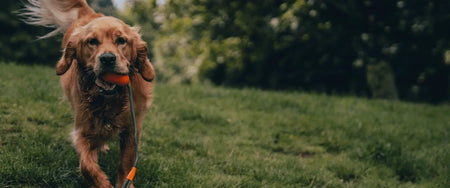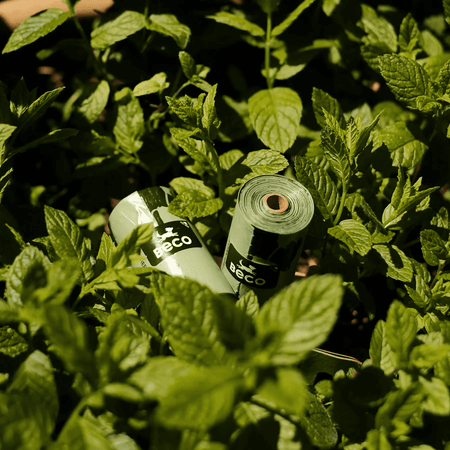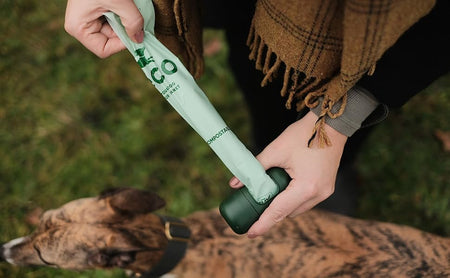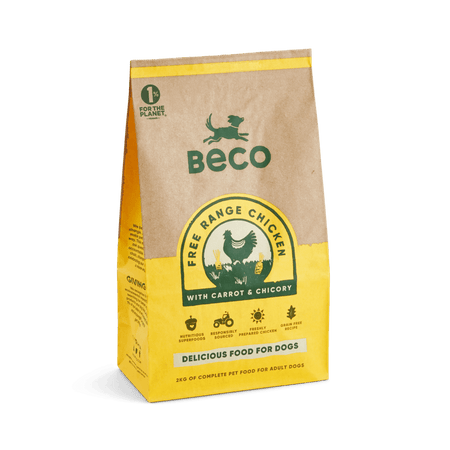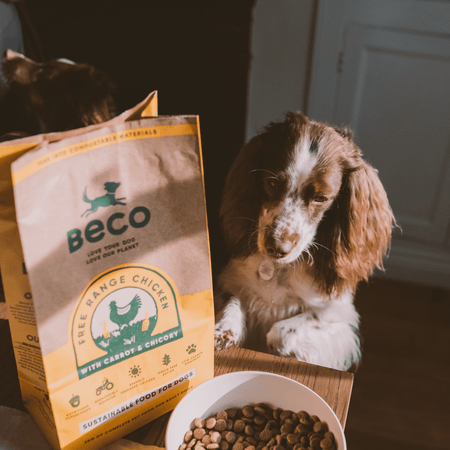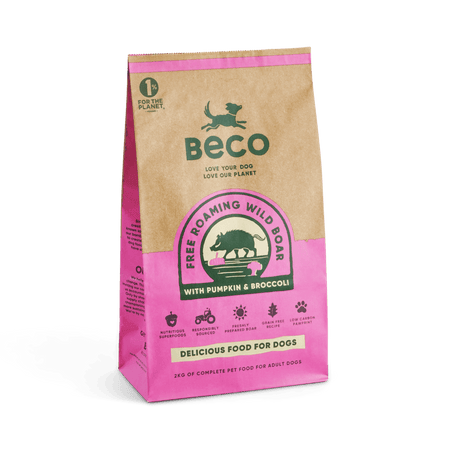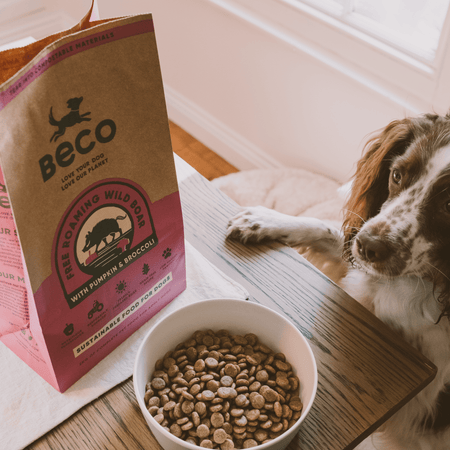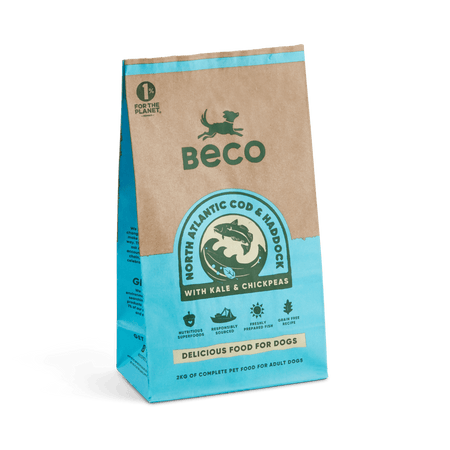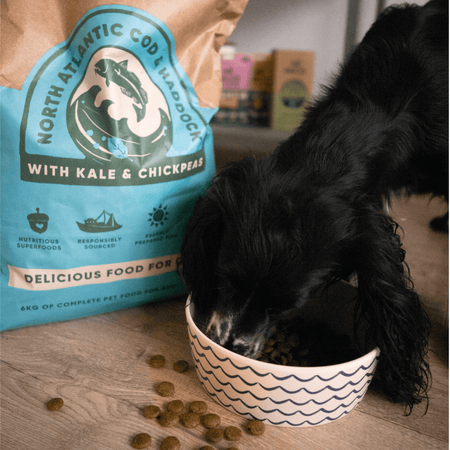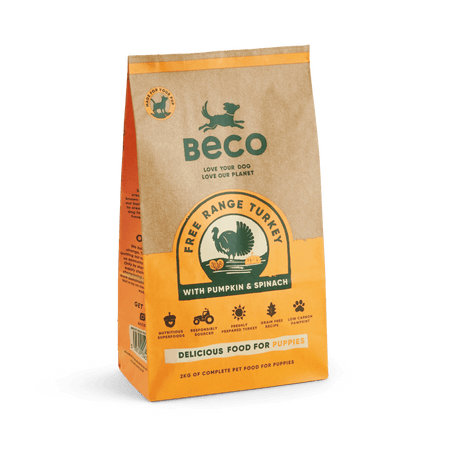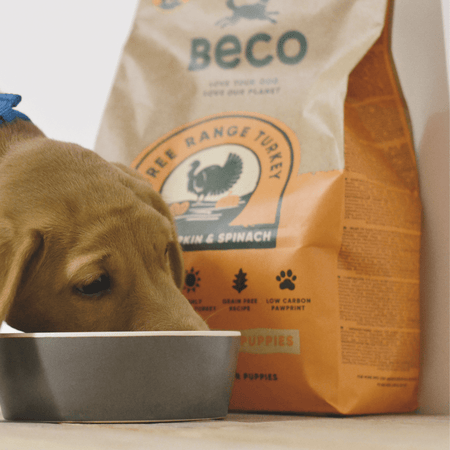When the sun’s blazing and the pavement feels like a frying pan, it’s not just us feeling the heat – dogs do too.
Appetite dips, energy levels drop, and suddenly the usual dinner routine isn’t cutting it.
You don’t need to overhaul everything, but a few smart changes can make a real difference. We’ll cover what to feed dogs in hot weather and how to keep them cool, hydrated, and well-fed.
- Adjust feeding schedules to cooler times of day to boost appetite and digestion.
- Incorporate hydrating foods that safely cool dogs from the inside out.
- Modify protein sources and portion sizes to match decreased hot weather metabolism.
- Recognize warning signs that distinguish normal summer appetite changes from health concerns.
Canine Thermoregulation & Nutrition
Dogs regulate body temperature differently than humans, relying heavily on panting to cool down. This thermoregulation process requires energy and proper hydration to function effectively.
Hot weather naturally decreases your dog's metabolic rate as their body attempts to generate less heat.
This biological response explains why many dogs eat less during summer months – their bodies simply require fewer calories to maintain normal functions.
The Science Behind Cooling Foods
Foods have warming, neutral, or cooling properties based on their effect on the body.
Cooling foods typically:
-
Require less energy to digest
-
Have high water content
-
Contain natural compounds that support temperature regulation
Proteins like duck meat, rabbit, and fish are considered cooling, making them excellent choices during hot weather. These foods create a lower thermic effect, helping maintain comfortable body temperature.
Hydration Strategies for Hot Weather
Proper hydration forms the foundation of hot weather nutrition for dogs. While a dog might normally drink about 50-60ml of water per kilogram of body weight daily, this requirement can double during hot weather.
Dehydration risks increase significantly in summer, with early signs including reduced energy levels, dry gums, loss of skin elasticity, and concentrated urine.
Practical Hydration Solutions
-
Cucumber (96% water): Offers hydration with minimal calories.
-
Watermelon (92% water): Provides natural electrolytes and antioxidants (remove seeds and rind).
-
Courgette (95% water): Contains potassium and vitamin C.
Bone broth ice cubes represent another practical hydration strategy, offering dual benefits of cooling and providing essential nutrients.
Seasonal Diet Adjustments
Most dogs naturally eat less when temperatures rise – a normal adaptation.
Rather than worrying about this reduction, focus on adjusting portion sizes and increasing nutrient density.
Feeding Schedule Adjustments
-
Serve meals during cooler hours (early morning and late evening).
-
Avoid feeding within an hour before or after exercise.
-
Split daily food into smaller, more frequent meals.
-
Remove uneaten food after 20 minutes to prevent spoilage.
Cooling Foods and Treats for Summer
Certain foods naturally help dogs maintain comfortable body temperature through their cooling properties and high moisture content.
Recommended cooling protein sources include:
-
Duck
-
Rabbit
-
Fish
Beneficial fruits and vegetables:
-
Pears
-
Apples (without seeds)
-
Cucumber
-
Watermelon (seedless)
-
Courgette
Recipes for Cooling Treats
Frozen Yogurt and Blueberry Treats
-
Ingredients: 200g plain, unsweetened yogurt, 100g fresh blueberries, 1 tablespoon honey (optional).
-
Method: Blend ingredients, pour into moulds, freeze for 4-6 hours.
Cooling Pumpkin Treats
-
Ingredients: 200g cooked pumpkin, 50g coconut flour, 1 egg.
-
Method: Mix ingredients, roll out dough, bake at 180°C for 15 minutes.
Breed-Specific Nutritional Considerations
Different dog breeds have varying nutritional needs during hot weather.
Double-coated breeds may benefit from higher moisture content in food, while brachycephalic breeds need maximum nutrient density to compensate for smaller meals.
Special Considerations for Senior Dogs
Older dogs face unique challenges in hot weather, requiring increased moisture content in meals and joint-supporting nutrients like glucosamine.
Frequently Asked Questions
How long does it typically take for a dog to adjust to a new summer feeding schedule?
Most dogs adapt within 7-10 days. Gradually shift meal times by 15-30 minutes every few days.
Can I use frozen treats as meal replacements during extremely hot days?
Frozen treats are excellent supplements but shouldn't replace balanced meals entirely. Replace up to 25% of regular food with nutritious frozen options.
Are there specific breeds that require more significant summer diet adjustments?
Yes, brachycephalic breeds, double-coated breeds, and senior dogs typically need more pronounced adjustments.
How can I tell if my dog's reduced appetite is due to heat versus a digestive issue?
Heat-related appetite reduction corresponds with temperature increases and improves during cooler parts of the day.
When should I transition back to my dog's regular feeding routine after summer?
Begin transitioning about two weeks before seasonal temperatures cool down, making gradual adjustments over 10-14 days.
Conclusion
When it’s hot out, most dogs go off their food a bit, and that’s completely normal.
The important thing is to make mealtimes easier for them. Cooler feeding times, lighter proteins, water-rich snacks, and the odd frozen treat can make a real difference.
It’s not about getting everything perfect, just paying attention to what they need day by day. And if they’re older or a bit more sensitive to the heat, small changes go a long way.
You’ll find a few good options in our grain-free dog food range, plus lightweight bowls that make staying hydrated a little easier.







